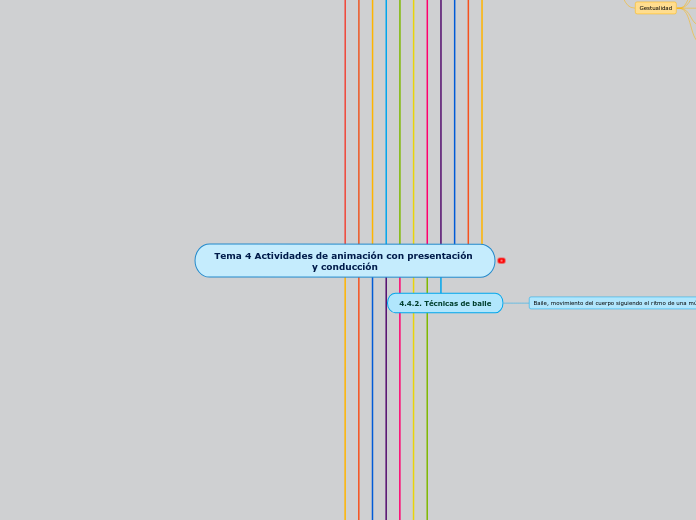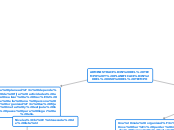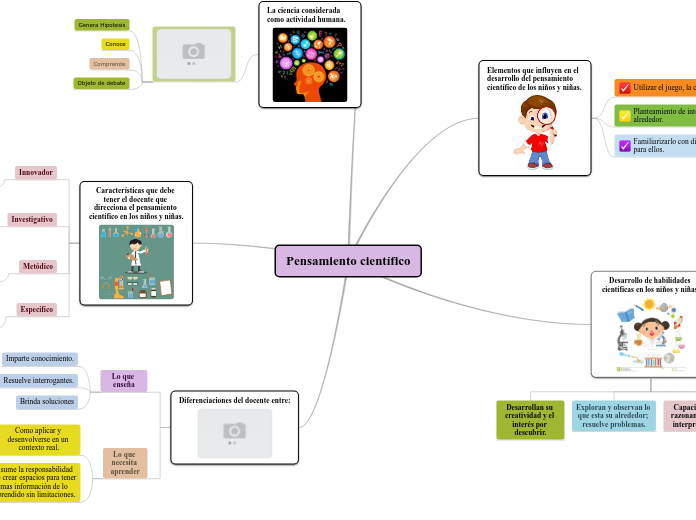Tema 4 Actividades de animación con presentación y conducción
To name your story, you have to think about the overall message and what you want your audience to understand from the story. Also, make it relevant and easy to remember.
4.5.3. La reconducción de actitudes y comportamientos
Personas maleducadas
Personas protagonistas
Personas vergonzosas
Personas desmotivadas
Personas desubicadas
Personas colaboradoras
4.5.2 La gestión de las contingencias
Fenomenos meteorológicos
Problemas de comunicación
Problemas logisticos
Problemas tecnicos
4.5.1 La intervención en las distintas fases
Despedida
Desarrollo
Inicio y saludo
4.5 La dinamización de veladas y espectáculo
La intervención del animador será clave para el exito del espectáculo si hay un imprevisto y reconducir el desarrollo de la actividad
4.4.5. Técnicas auxiliares
Teatro de títeres
Tipología
Silueta
Bocón
De varillas
Marionetas
De dedo
De aguante
Papiroflexia
Globoflexia
4.4.4. Técnicas de caracterización
Caracterización, conjunto de elementos técnicas para modificar la a paraciencias física de una persona y aproximarla a la de otra persona o personaje
Complementos
Vestimenta
Vestuario
Disfraz
Maquillaje
4.4.3 Técnicas de ambientación
Efectos especiales
Aspectos técnicos
Sonido
Micrófono
Ambiente
Diadema
Solapa
Contacto
Sobremesa
De mano
Cables conectores
Altavoces
Amplificador
Mesa de sonido
Aparato reproductor
Iluminación
Música
Veladas y espectáculos
Actividades participativas
Entregas de premios
Escenografía
Ambientación de espacios
Auditiva
Gustativa
Olfativa
Ambientación visual
4.4.2. Técnicas de baile
Baile, movimiento del cuerpo siguiendo el ritmo de una música
Enseñanza de las coreografías
4- Se añaden giros
3- Se incorporan desplazamientos
2-Se añaden los movimientos de los brazos
1- Se enseña los movimientos de pies y pieras
Actividades físico-deportivas coreografiadas
Cierre progesivo
cierre brusco
cierre
Puente musical
Estribillo
Preestribillo
introducción
Parte principal
Calentamiento
Composición de coreografías
Corecografias para espectaculos
practicar la rutina
anotar la coreografía
decidir los complementos
crear la rutina
conocer el estilo de baile
analizar cada sección
escuchar la cancion
Espacio
Participantes
Estilos de baile
Bailes urbanos
Bailes del mundo
Danzas colectivas
Salón
4.4.1 Técnicas de expresión
Expresión corporal
Gestualidad
Movimientos
Postura
Calificativos
Enfaticos
Demostrativos
Expresión facial
Mirada
Expresion oral
Aspectos paraverbales
Tono
Pausas
Volumen
enfasis
fluidez
Ritmo
Entonación
Mixta
Descendente
Ascendente
Dicción
Aspectos verbales
Interés
Formalidad
Corrección y precisión
Concisión y concretación
Claridad del mensaje
Comunicación
No verbal
Verbal
4.4. Técnicas para veladas de espectaculos
El animador debe conocer el amplio abanico de técnicas que permiten organizar y dinamizar de forma satisfactoria toda la variedad de actividades que se pueden desarrollar
4.3.3 La publicidad de las veladas y los espectáculos
Caracterización y disfraces
Anuncios
Ambientación de las areas comunes
Contacto directo
4.3.2 El guion
Es un documento escrito en el cual se plasman de forma ordenada la estructura y el contenido de un acto
El guion de las representacionese
Desenlace
Nudo
Introduccion
El guion de las veladas y los espectaculos
4.3.1 Proceso de planificación y organización
9- Guion de iluminación
8- Guion de escenografía
7- Guion de sonido
6- Elementos decorativos
5- Vestuario
4- Asignación de tareas
3- Listado de materiales necesarios
2- Guión general
1- Definición de la propuesta
4.3 Planificación y organización de veladas y espectáculos
Asignación de tareas, se deben determinar las tareas que permitirán hacer realidad la propuesta definida y asignarlas a las distintas personas del equipo de animación
4.2.2 Estrategias
Las intervenciones deben partir con respeto
Buscar nuevas habilidades y recursos para incorporar en las actividades
Interactuar con el público
Voz alta
No dar la espalda al auditorio
Evitar inmovilidad total
Controlar la postura corporal y usarla para apoyar la comunicación
Mostrar expresividad sin sobreactuar
Establecer contacto visual
Sonreir
Cuidar la imagen corporal
4.2.1 Cualidades y habilidades
Imparcialidad
Implicación y credibilidad
Sociabilidad
Carisma y capacidad motivadora
Agilidad mental
Adaptabilidad
Observación e intuición
Creatividad
Seguridad y aplomo
Buenas dotes comunicativas
4.2. El animador o la animadora
Debe presentar el acto y los números que lo constituyen, mantener la participación y conseguir que todo el mundo se divierta
4.1.2 Tipología
The middle of the story is where you add layers of complications that will lead to the end. Reveal more about the character's journey. Did their personality go through changes? How did they overcome the challenges? And as you build up the story’s central conflict, make it more personal to that character. Also, from the middle act, you have to lead into the final act.
Según el nivel de participación requerida
Your character(s) need(s) motivation in order to solve the challenge(s).
Según el momento del día
Animación de noche
Animación de tarde
Animación matinal
Actividad de participación compartida o mixta
Secondary characters also might have motivs beacuse of which they may cross path with main character or which might trigger them to help the main character.
Monólogos
Sketches
Espectaculos de magia o cómicos
Representaciones, cabarets y musicales
Karaoke
Actividades de participación pasiva
Secondary characters might also have motives that lead them to cross paths with the main character or which might trigger them to help the main character.
Exhibiones de baile
Música en directo
Proyecciones cinematográficas
Cabarets
Shows
Representaciones
Actividades de participación activa
Why does your character need to confront this challenge? What does he/she expect to accomplish by solving it?
See a few examples:
- will marry in 3 days
- can fix the mistakes of the past
Fiestas
Competiciones de preguntas y respuestas
Campeonatos de juegos de mesa
Bingo y lotería
Actividades de baile y coreografías
Entrega de premios
Elecciones
Concursos
Juegos de imitación
Juegos musicales
Juegos locos
Juegos de entreacto o de intermedio
Según el colectivo destinatario
Each story has a main character and that character usually needs to solve a problem or challenge. The character's challenge is the one that creates tension throughout the story.
Colectivo de personas mayores
65 años, las propuestas deben mantener activas físicas y mentalmente y ofrecer oportunidades para la socialización del colectivo, se debe proponer actividades grupales como individuales y alternar la intensidad
Colectivo de personas adultas
Prefieren disfrutar de un momento de desconexión relajándose antes que realizar una actividad lúdica activa por eso es importante realizar una actividad tranquila para su mero disfrute y relajación
Colectivo adolescente y juvenil
Type in any other challenges which other characters in the story need to face.
Delimitar las actividades de los jóvenes con las personas adultas y mayores, desarrollar emociones afectivas mediante la actividad y mezclar ambos sexos en los juegos y descargar y liberar energía en el juego, evitar actividades de riesgo
Colectivo infantil
In most stories, there are 3 challenges. The number 3 is a mystical number symbolizing completeness. Try to come up with interesting challenges with which your character needs to struggle.
See a few examples below:
- turns into a werewolf at night
- is sent back in time
Hasta los 14 años, las actividades deben ser breves y variadas evitando juegos peligrosos con reglas simples y claras y sobre todo gestionar la confianza y la competitividad
4.1 Veladas y espectáculos
In the beginning of the story (or the exposition), you will need to introduce the setting and characters. You might also want to introduce the main conflict. This part of the story is important because it gives the reader necessary background information and maybe even a first insight into a character’s personality.
4.1.1 Principios
The setting (time & place) of a story can change throughout the plot.
Vinculación con el entorno
Material suficiente
Presentación atractiva
Inclusión y respeto
Adecuación al público y a la situación
Sensory details include sight, sound, touch, smell, and taste. These details are important because they create depth in your setting.
See a few examples below:
- the smell of fresh bread
- the scent of freshly cut grass
- rain falling onto the windshield etc.
Libertad de participación
The weather is an important element in your story because it can highly influence the ambiance and the mood of the characters.
Ambientación visual y musical
The time of the story can also change. It can describe the event of a single day or can include an entire year's plot. Anyway, don't forget to mention it.
Delimitación del marco espacio temporal
Your story can take place wherever your imagination will take you to.
For example: in an elevator, in an enchanted forest, etc. Don't forget to give details of the environment each time the setting changes, otherwise, the story can be confusing. Also, mention the seasons as each of them has unique weather and events.
Veladas y Espectáculos
Characters are essential to a good story. Usually, the protagonist(s) is/are the most affected by the plot. Introduce a character by focusing on their actions, interests, and occupation, as the physical appearance doesn't make a difference in most cases.
Son...
Type in the name of your character.
Un espectáculo es una actividad lúdica de animación desarrollado en el escenario y con público
Add other qualities/attributes of the character.
Evento de animación que tiene lugar en la noche con finalidad lúdica y relación social entre personas que participan
What is your character's main goal?
fight Evilfind lovedefeat his/her enemyrule the worldmake friendstime travelmake an awesome discoveryOther










